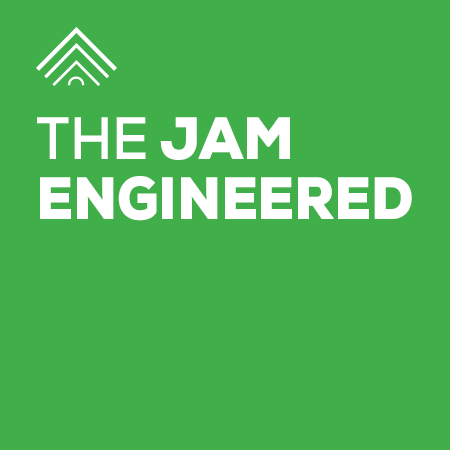Q + A with Lexington | Innovating the Fenestration Frontier
Lexington explores new horizons in quality, efficiency and sustainability for the window and door industry

 In the bustling heart of the Midwest, where innovation meets craftsmanship, Lexington Manufacturing has carved a niche that has stood the test of time since its inception in 1981. A premier original equipment manufacturer supplier and contract manufacturer, Lexington has over 40 years of experience and boasts advanced capabilities, including everything from profile wrapping and CNC machining to lamination and panel processing for the fenestration industry. More than just a manufacturer, Lexington is a dedicated partner committed to streamlining production processes for its clients.
In the bustling heart of the Midwest, where innovation meets craftsmanship, Lexington Manufacturing has carved a niche that has stood the test of time since its inception in 1981. A premier original equipment manufacturer supplier and contract manufacturer, Lexington has over 40 years of experience and boasts advanced capabilities, including everything from profile wrapping and CNC machining to lamination and panel processing for the fenestration industry. More than just a manufacturer, Lexington is a dedicated partner committed to streamlining production processes for its clients.
Window + Door recently sat down with Lance Wasniewski, director of product development and technical sales at Lexington Manufacturing to discuss several key industry trends and topics relevant to the fenestration and building products sectors. Addressing rising costs from competitors, the growing importance of efficient supply chain management, automation within manufacturing processes to increase efficiency and the significance of relationships with customers, Wasniewski shares that a proactive approach to addressing market challenges, through innovation and collaboration, is vital in seizing opportunities.
Window + Door: What opportunities are you seeing in the fenestration industry, especially regarding patio door stiles?
Lance Wasniewski: With recent disturbances in pricing from other manufacturers, we recognized a chance to enter this market. The patio door market represents an adjacent opportunity for us as we have the competencies to create engineered wood core components, laminated materials and various finishes suitable for the patio door segment.
Because of this, we are strategically expanding into this area to provide a wider range of services for our customers.
WD: How do residential door stiles differ from commercial door stiles, regarding materials and performance?
LW: The requirements for commercial doors often involve fire ratings, high durability and performance levels, and appearance that the door needs to meet. In comparison, residential doors, including patio stiles, may focus more on aesthetic appeal while still maintaining performance. Using our knowledge of both areas of the industry, we can tailor our materials—the internal components—to meet those requirements, typically dictated by the industry or by the specific manufacturer we’re working with to supply those components.
WD: Working with multiple manufacturers can be challenging. How does Lexington ensure a smooth supply chain interaction?
LW: We use a ‘shopping cart’ approach, combining various supply channels to bring materials together and deliver a broad range of components efficiently. For instance, we can deliver both ready-to-assemble components or raw components for manufacturers to assemble themselves. We could supply just a simple door stile or window component or something as complex as a 90-minute, fire-rated banded door assembled to be ready for the production line—some customers do both as it helps them streamline their processes. Ultimately, our goal is to focus on our customers so they can do what they do best—manufacture doors and windows.
WD: Could you elaborate on your just-in-time manufacturing approach? How does that work in practice?
LW: We focus on make-to-order production rather than holding large inventories. We do maintain Kanban stocking levels for certain programs, which allows us to anticipate and deliver products as needed. On the raw materials side, we prepare based on known orders and forecasts to ensure we have the necessary materials ready for production. Many of our raw materials can be used across various components, providing us with the flexibility to process these materials into different finished products. This system allows us to efficiently manage both raw and finished components, adapting to customer demands while minimizing inventory costs.
WD: Automation is a hot topic in manufacturing. What level of automation does Lexington employ?
LW: We have been increasingly automating our processes, particularly in our feed systems, where automated pushers now push materials into a process, such as sanding. These devices handle the loading and unloading, allowing our experienced operators to focus on setting up the machines and conducting inspections rather than engaging in the physical labor of pushing and pulling materials.
WD: What role does vendor consolidation play in Lexington’s efficiency strategy?
LW: Our focus is on understanding our customers’ requirements for end applications and identifying the available materials to create products that fulfill these needs while delivering them on time. We leverage our supply channels effectively, considering factors such as freight costs and the volume of materials needed to supply various components to multiple customers, which allows us to achieve efficiency by consolidating our material sourcing. By maximizing freight capacity and ensuring we optimize the amount transported on each truck, we aim to streamline the entire process of moving through the supply channel.
WD: What key trends and business opportunities do you see on the horizon?
LW: Our focus is on creating strong relationships with our customers by understanding their needs in the ever-evolving marketplace. As we navigate changes, particularly with opportunities like the patio door stiles, we recognize the need to streamline operations by bringing in specific components to better serve our clients. Additionally, we see a shift from offshore to onshore supply channels to assist in speed to market demands.
WD: Speaking of offering solutions, what can new customers expect when considering Lexington as a partner?
LW: We have a long-standing partnership with our customers, built on over 40 years of experience in the industry and a strong track record of proven capabilities. A large portion of our current customer base has been working with us for 15 years or more. Our solid relationships and commitment to integrity allow us to deliver components on time, as needed. We offer a wide variety of solutions with different materials, and we are always ready to collaborate with our clients to develop or modify these solutions to meet their specific needs. Together, we can work toward finding the best solution for their requirements.
WD: Finally, are there any additional insights you’d like to share?
LW: In recent years, we have expanded our offerings to include the stile and rail board market, in addition to servicing the architectural flush door market, and we recognize the patio door market as an adjacent area with significant growth potential. Given our existing capabilities and experience in this realm, we are strategically positioning ourselves to enhance our presence in the patio door segment. And we are actively working to cultivate and strengthen relationships with potential customers in this market to leverage our expertise and drive growth in this area.




